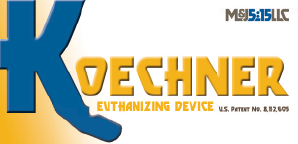

KED'S
KED aka Koechner Euthanizing Devices are tools developed for mechanical cervical dislocation for use in separating the skull from the vertebrae for various sizes of poultry. These tools have been tested by many scholars of animal welfare and are very effective and humane. When used properly they will last for years.

